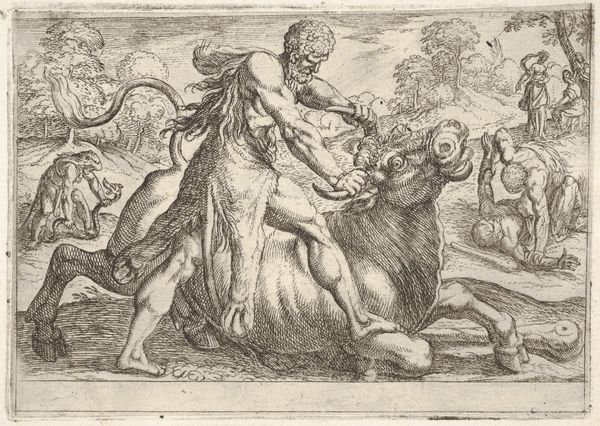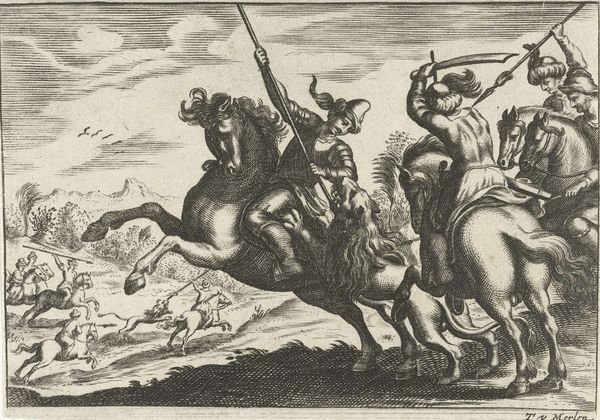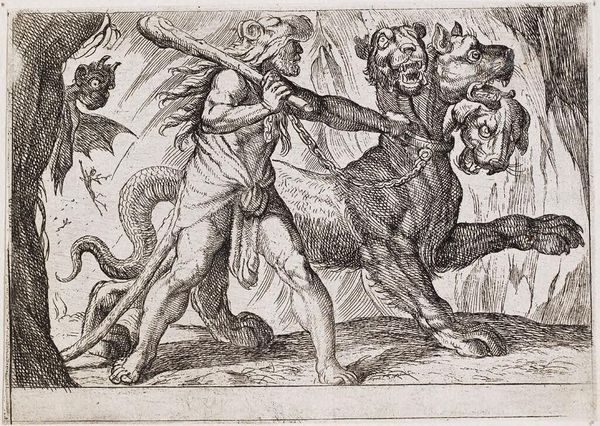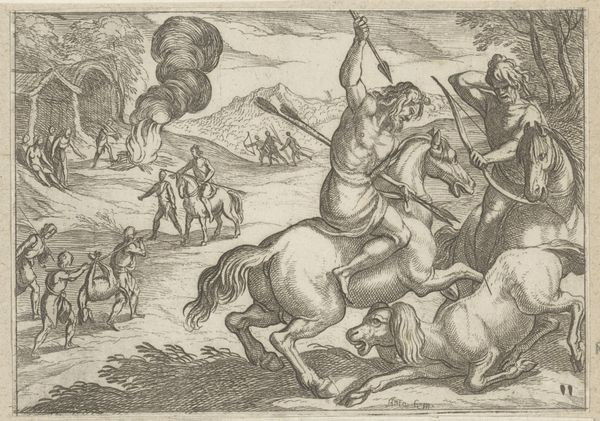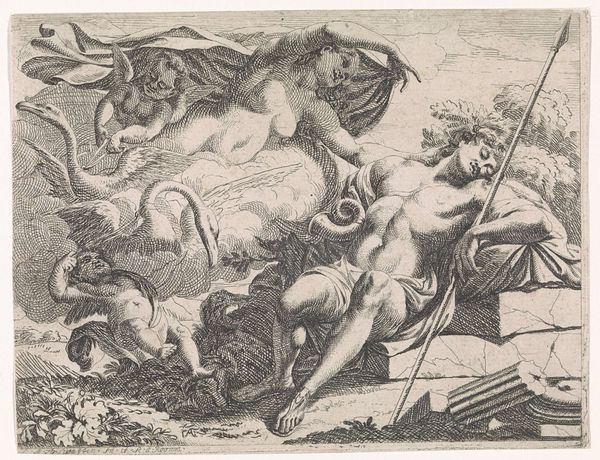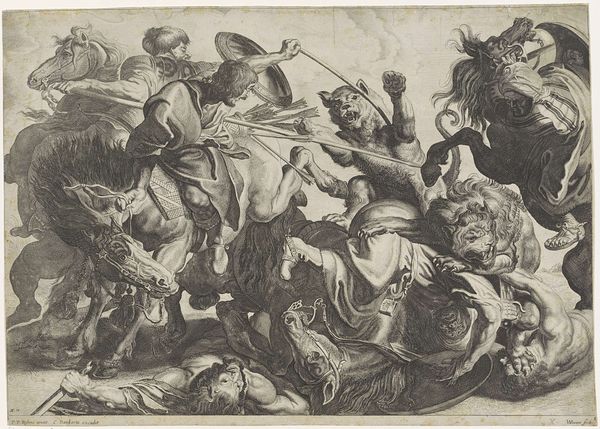
Hercules and the Centaurs: Hercules holds the head of a centaur with his left hand and raises his club with his right hand, in the foreground and background are fallen and fleeing centaurs, from the series 'The Labors of Hercules' 1608
0:00
0:00
drawing, print, etching, engraving
#
drawing
#
baroque
#
pen drawing
# print
#
etching
#
landscape
#
figuration
#
line
#
history-painting
#
engraving
Dimensions: sheet: 5 1/2 x 6 7/8 in. (13.9 x 17.5 cm) plate: 3 15/16 x 5 9/16 in. (10 x 14.1 cm)
Copyright: Public Domain
Curator: The frenzy of Antonio Tempesta's "Hercules and the Centaurs" immediately strikes me, a chaotic energy barely contained within the etching's fine lines. Editor: It’s visceral, isn't it? This print, dating to 1608, really makes you consider the physicality of these mythological struggles. Look at Hercules – the materials of his club, the yielding flesh of the centaur he's gripping. You almost feel the weight. Curator: Absolutely. And consider the historical context; prints like this were incredibly influential in disseminating classical mythology. They brought these stories to a wider audience, shaping the cultural imagination. What's interesting is the dynamic play of power within social circles and gatherings. Editor: Right, because the circulation of these images involved workshops, patronage, distribution networks… the labor behind even a single print is considerable. Look at the line work – etching requires specific skills, the careful application of acid… Curator: Yes, Tempesta's workshop surely involved numerous artisans who, depending on commissions and demand, engaged to secure labor contracts for specialized skills in response to socio-economic opportunities and power dynamics present at the time. What is equally intriguing here is how the artist portrays an almost democratic diffusion of history and heroic acts. It’s the artist creating a historical account but within the bounds that the artist deemed appropriate given the demands. Editor: Do you see any symbolism here? This could perhaps demonstrate a challenge to norms as to who had rights or not. Is Tempesta being rebellious or complicit with status quo norms in European cultural production? Curator: Interesting! Well, the fallen centaurs clearly symbolize the defeat of bestial instincts, a triumph of civilization over barbarity, the heroic subject being at the forefront here. Though his imagery might have catered to existing power structures, and indeed his social position as an established artist allowed that to take place, in doing so it doesn't mean this kind of representation never reinforced them, as well as opening avenues for change and social critique at later times. Editor: That's fascinating. When you think about the means of production—how these prints made classical narratives accessible and adaptable—you also see how their materiality becomes implicated in shifting social perspectives, as with many others works from Antonio Tempesta that involve power themes. Curator: Indeed. This etching gives us so much to think about. Editor: An action-packed microcosm reflecting so much broader context!
Comments
No comments
Be the first to comment and join the conversation on the ultimate creative platform.


